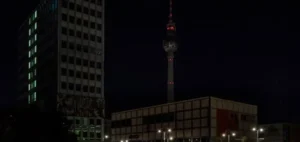A lower risk of power cuts in France in January: the manager of the high-voltage network, RTE, has given reassuring forecasts for the first month of winter, largely thanks to the sobriety of households and businesses and the increase in the availability of nuclear power in December.
In its last analysis of November 18, RTE had placed this month at “high” risk. “France is approaching the heart of winter in a more favorable situation than at the beginning of autumn, and better prepared to deal with situations of tension,” now estimates the operator, in the latest update of its outlook for the power system for the next four weeks.
“Subject to the maintenance of energy saving efforts, these favorable developments reduce the risk for the security of supply compared to the anticipation of recent months, particularly for the month of January (…) without being able to exclude it in the event of very unfavorable weather conditions,” underlines RTE in its report.
This positive development can be attributed to several factors. Starting with a sharp drop in consumption which is “now firmly established”, with a 9% decline over the last four weeks.
“The decrease in electricity consumption is not a pipe dream, it is real and measured” and distributed between individuals and businesses, commented Thomas Veyrenc, executive director of RTE during an online press briefing.
Not necessarily cuts
In addition, the hydraulic stocks (dams), which had suffered from the drought, were able to be “reconstituted” during the autumn, while the gas stocks were preserved thanks to the mild temperatures of October and November, which postponed the heating period. “The level of filling of gas stocks is now around 85%, higher than in previous years”, underlines RTE.
France has also been able to count on the solidarity of its European neighbors, with “a record level of electricity imports close to 15 GW” in recent weeks. Another notable factor, which has come under close scrutiny in recent weeks, is the availability of nuclear power, whose available capacity exceeded 40 gigawatts (GW) as of the week of December 12, particularly after the restart of several reactors.
“The increase in nuclear availability was in line with our forecasts,” Mr. Veyrenc said. All of “these elements reduce the risk of the Ecowatt red signal being issued” compared to the baseline scenario established by RTE in September. This signal warns of the risk of targeted outages unless there are substantial reductions in electricity consumption.
While RTE expected the activation of 0 to 5 red signals in the winter, this risk has been reduced slightly for the second part of the winter weather, to be “rather between 0 and 3 signals”, said Veyrenc. “We absolutely have the means to avoid blackouts this winter,” Veyrenc insisted.






















